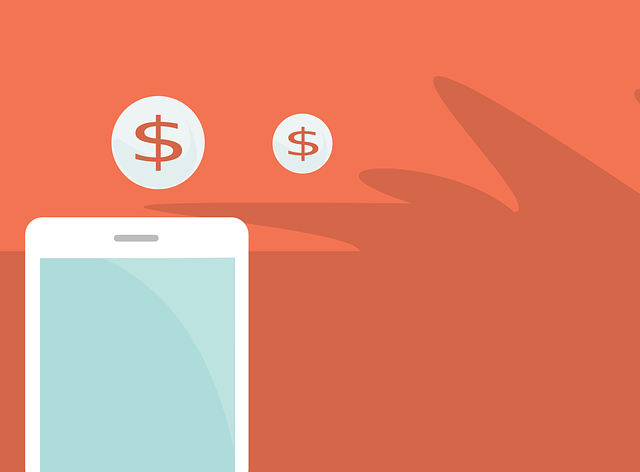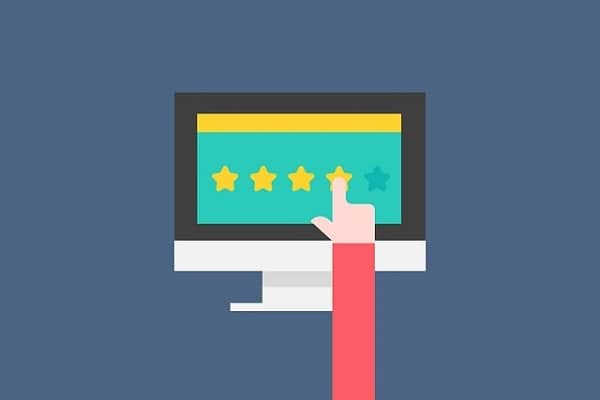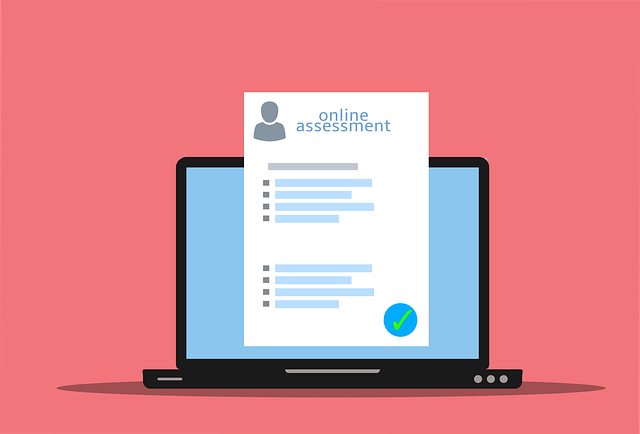Wix vs. Shopify Ecommerce Website Builder Comparison
If you want to get into ecommerce, meaning selling things online, you're probably trying to figure out what website to use to set up your store. Both Wix and Shopify are great website builders to use for building an ecommerce site.
But if both sites are so great, which one should you choose? We're going to show you a side by side comparison of Wix and Shopify to help you understand what each site offers in regards to an ecommerce business.
We'll discuss all the essential things to know, including features, customization, marketing, payments and shipping, apps, and blogging. You'll have a complete understanding of what each site can provide for you to make an informed decision on which ecommerce builder to use.
Ease of Use
When it comes to building websites, we've come a long way since writing code for everything our users will see when they visit the page. Both Wix and Shopify are easy to use. You will not need coding skills for either site.
Wix
When you're building an ecommerce site with Wix, it's as simple as dragging and dropping the components into the exact spot you want. If you're a beginner to web design, Wix is easy enough to use that you can have a site set up in no time.
However, because Wix started as a site to design regular websites, it will take some time to set up an ecommerce site. Some users find it's more challenging to create categories and feature products.
With Wix, the dashboard and the editor are separate, so you can do things like manage your sales and add products without having to edit your site.
Shopify
Shopify requires a bit more effort and time to get a site up and running. It can be a lot trickier to build a website from scratch if you're a beginner.
But there are helpful tutorials to walk you through getting everything the way you want it. And live chat support if you hit a snag.
But Shopify does have more structure in their design, which many users appreciate when building an ecommerce site. Having a good idea of where you need to put things can save you time in the long run.
Design
When it comes to your e-store, you'll want to consider the way your site looks. You could have the best products for exceptional value, but if your website is messy and jumbled, customers aren't going to stick around and buy things.
Templates
Both Wix and Shopify offer the ability to design eye-popping sites guaranteed to appeal to even the pickiest customers. You can set up your site using hundreds of provided templates. And both sites support mobile shopping so your customers can buy on the go.
Wix
Wix offers over 500 templates to customize your site exactly as you picture it in your head. However, we do need to point out that only 57 of these templates are specifically for e-commerce.
If you choose to use a template not intended for e-Commerce, you can easily customize it to suit your needs for an online store. There's a template for just about any industry or category you could dream up.
Shopify
In regards to templates, Shopify has less of a selection than Wix. There are less than 100 themes. However, be aware that some of these templates require a purchase or a premium membership.
Many of the templates can be costly, as high up as $180, which is why many customers who use Shopify have more significant business. Smaller businesses prefer the ease and cheaper cost of Wix. There are templates for a variety of industries.
Customization
Both Wix and Shopify offer users plenty of customization using CSS – Cascading Style Sheets – or HTML – Hypertext Markup Language.
Wix
With Wix Code, you can change everything on your site, including how the page scrolls and your web applications. You access this by clicking code, then scrolling down to developer tools once you're in the Editor.
Shopify
Shopify also makes it easy to have full control of your website's appearance by altering the HTML or CSS. Access the code editor by clicking Edit HTML/CSS while you're on the Admin page.
Features
Both Shopify and Wix offer a wide range of features to set your site up for an ecommerce business. Shopify does have a leg up since it's primarily an ecommerce builder site, whereas Wix caters to all types of sites, including ecommerce.
Types of products
Both website builder companies support selling any types of products, whether it's physical, digital, or electronic services. It doesn't matter if you want to sell homemade candles, stock images, or articles that are delivered electronically.
There are some differences to point out about how to sell your products. Wix requires you to install an app if you want to sell services. In comparison, Shopify needs a third party integration if you're interested in selling digital products.
Presentation
How you present your products will have a massive impact on your number of sales. If your images are blurry or cluttered, customers will be less likely to add your products to their cart.
Shopify
You get a ton of freedom on how your products are featured with Shopify. You can list an unlimited number of products, with multiple versions of the product, so your customers get a complete view of what you're selling.
You will need to install separate apps if you want to add videos of how your product works. You'll also need a different app if you're going to allow customers to zoom in for an up-close view.
Wix
With Wix, you can feature videos without having to install any new apps. It's automatically built-in and simple to use. Zoom isn't automatic, but you can add the extra feature without problems.
But where Wix really shines compared to Shopify, is that you can design a unique checkout page that reflects your website design and brand.
And, your customers can safely store their card information in the My Wallet section, so they don't have to re-enter their data each time they purchase from you.
Inventory
Shopify has plenty to offer when it comes to your inventory. You can sell single products or multiple. There's stock management tools, revenue reports, and an easy to navigate section that helps you keep everything organized whether you're running a small business or a large.
Wix is recommended more for smaller stores, so there's less inventory tools at your disposal. If you want to put together revenue reports or analytics on visitors and sales, you'll need to use apps. But you can upload multiple products, so there's no limit to how much you can sell.
Cart Recovery
Wix and Shopify both have abandoned cart recovery, which allows you to email customers who skipped out on your website while still having items stored in your cart.
Trying to close the deal on sales that haven't been completed is a great way to boost your revenue. You can add up to 25% extra income.
Marketing
When it comes to marketing, Shopify and Wix are challenging to compare. Shopify relies on thirty party apps to help with your marketing, so you have a variety of options at your fingertips. Wix, on the other hand, has an all-in-one marketing tool called Wix Ascend.
Ascend does require a separate subscription, so you'll have to pay extra, but some of the apps on Shopify can cost money too. With Ascend, you can develop and manage your marketing campaigns in one location without having to go through a bunch of separate apps.
Payments
You have a lot of flexibility when it comes to payments with both Wix and Shopify. But there are differences between the two builders that you should consider.
Wix
Wix accepts a variety of payment options, including popular payment sites like Stripe, Paypal, and Square. But currently, you cannot accept Amazon Pay or Apple Pay.
Regardless of which payment source your customers use, you will not have to pay a transaction fee, no matter which plans you're using.
Shopify
Shopify allows you to take payments from over a hundred different money managing sites. They accept PayPal and Stripe. But unlike Wix, Shopify does not support Square payments.
You can expect to pay a transaction fee for any payments made outside Shopify Payments, which can be detrimental for smaller businesses who don't want to lose out on any money.
Another difference between Wix and Shopify is that Shopify enables you to allow customers to include a tip on their purchase. You can also edit your checkout text to request donations to your chosen business or charity.
Many people prefer to round up their purchases to the nearest dollar. That spare change has to go somewhere.
Shipping
Shipping is a vital aspect of your business. Customers aren't going to want to purchase from you if they experience problems receiving their items on time or in good condition. Not to mention, a lot of people don't want to pay high shipping fees.
Shopify
Shopify takes all the challenge out of shipping your goods to your customers. They offer free shipping and the option to sync your deliveries with different shipping carriers to get the best delivery.
Shipping is done through USPS, FedEx, and UPS, although all shipping options aren't available with specific plans. Dropshipping is supported through Shipwire or Rakuten app and Amazon through the proper integration.
Shopify also allows for curbside pickup or local delivery, so your customers don't have to wait for shipping if they're close to your business. No matter how you plan to ship your goods, Shopify has a good solution for you.
Wix
Shipping with Wix requires downloading an app for global shipping payments. Wix uses an app called ShipStation to streamline the shipping to your customers. Wix also has free shipping and flat rate or weight-based pricing.
Shipping is only done through USPS. They do not support shipping through FedEx. For dropshipping, Wix only uses Modalyst.
Taxes
Whether you choose to apply taxes to your purchases will vary. But both Shopify and Wix make it easy to figure up taxes if you decide you want to add them.
With Shopify, you can set your items to show the price with or without taxes, based on your settings. You can also set automatic tax rates based on the country of shipping, so you don't have to figure out the prices yourself.
You should always check the conversion rate to be sure it was figured up correctly. If you don't want to add taxes, no problem. And if you have a higher plan package, you get access to Avalara AvaTax, which automatically calculates fees and organizes your tax filing.
With Wix, you have the option of charging taxes or setting your price without taxes. If you choose to add them, the rate will automatically calculate, so you don't have to figure out the math yourself. However, this only works if you're using the Avalara app, which is free.
You can even set special tax rates for different products since some categories will require higher tax. And some countries have different tax rates for specific products.
SEO
SEO, or search engine optimization, is one of the best ways to get traffic to your site. Search engines use long and short tail keywords to provide the best results based on a customer's query.
Learning how to optimize your website to target keywords related to what products you sell is a great way to increase your revenue. Wix and Shopify offer a few SEO tools to help bring in more traffic.
You can alter your page titles, headings, product descriptions, alt image texts, and redirects with both sites. This means you have full customization of all the critical areas that search engines use to detect keywords.
You can access your sitemap, and you can add a Facebook Pixel code that allows you to track sales conversions from social media.
But both sites do have weird ways of displaying your URLs. You can modify the tail end, but with Wix, you'll have to manually create a redirect. Shopify lets you click a box to create an automatic redirect.
Wix
Wix has the option to sell on Instagram, which is a great marketing move. Half of all purchases start with browsing on social media or searching through a marketplace.
With Wix, you'll have to create two versions of your site, one for mobile and one for desktop, as it is not responsive. A responsive website means the site automatically detects what type of device the customer is using and displays your data in the proper format.
To determine how your site appears on your customer's devices, Wix uses absolute positioning, which places the page elements based on pixels. The size cannot adjust, which is why you need two versions of your site.
Non-responsive sites are not considered search-friendly for mobile websites, which gives them lower rankings in Google search engines. You could lose out on a lot of business by appearing lower in the search results.
Shopify
Shopify offers integration with multiple social media sites, such as Facebook and Instagram. You can also link your store to Amazon and eBay.
Shopify has a leg up over Wix when it comes to mobile features. Shopify is considered a responsive site, so Google indexes Shopify sites faster than Wix.
If you're trying to create the best SEO optimized ecommerce site, especially with specific niches, Shopify is easier to use and more likely to rank in search engines than Wix.
App Stores
Both Wix and Shopify offer the ability to use apps to manage your store right from your tablet or phone. Let's look at the different features of the two app stores.
Wix
To edit your website on the go, Wix has the app Wix Mobile App. While it lacks some of the ecommerce features that you would get with Shopify apps, the Wix app is excellent for quickly editing your site.
You can also create blog posts, add images, and manage events from the app. However, the app won't help you with inventory or process payments.
Shopify
Shopify offers multiple apps to let you edit your site, including Shopify and Shopify POS. With the Shopify app, you can manage your store for general purposes.
And with Shopify POS, it's geared towards a point-of-sale (POS), such as a brick and mortar location where you need to take payments or keep up with inventory.
There's also apps based on whether you use an iOS or Android device. You can find apps for making business cards or logos or enabling a chat feature on your site. Overall, Shopify's apps are geared more toward managing your ecommerce business.
Blogging
If you want to maintain a blog along with your ecommerce site, Wix works better than Shopify. Wix understands the importance of blogging and makes it easy to host your blog right on your website.
Although if you want to set up an archive of your older posts so your visitors can have full access to your entire blog, you'd be better off hosting your blog on a site intended for blogging. Wix does not offer archiving.
While Shopify is an excellent ecommerce tool, it lacks a lot when it comes to blogging. You can host a blog on this site, but there are some limitations on what you can and can't do. There are no built-in analytics, social bookmarking, or search features limited explicitly to the blog.
If blogging is vital to your ecommerce site, you will do better setting up a website with Wix over Shopify. However, you may prefer to go entirely off-site for your blog hosting if you need essential features like archiving old posts.
Support
Support is a crucial aspect of web management. You want to have access to a wide range of help if you hit a snag or get confused about your design. Both Wix and Shopify offer plenty of support for no extra charge.
However, it can be tricky to find contact information for connecting with support. You often have to go through multiple steps just to reach a real person. Downright frustrating, in my opinion.
Wix
Wix offers phone or email support, so you can access a real person when you have questions and need answers. To talk to someone by phone, you have to list your number and wait for a callback.
However, there is no chat feature, which is a bummer for people like me who prefer to communicate without talking on the phone but need quick answers.
You can also access the resource center for frequently asked questions about common issues users experience so you can attempt to resolve the issue by yourself before reaching out for help.
But Wix also charges extra if you want VIP support or priority response. We don't see why you should have to pay an additional fee to access customer support. But that's totally up to you if you think the extra money is worth it.
Shopify
Shopify can talk to a customer service representative through email, phone, or live chat. Live chat lets you get instant assistance without having to worry about trying to explain your problem verbally.
Plus, you have access to an extensive FAQ section if you want to do some research before connecting with a person for help. Often, you can find the answers to your questions with a few clicks.
Some paid templates with Shopify might require getting support from a third-party rather than with Shopify support. Depending on the company that created the template, you might end up with some complicated customer support.
The company lists customer service numbers for seven different countries: North America, Australia, Ireland, UK, New Zealand, Hong Kong, and Singapore. It's unclear how to receive support if you're not in one of these countries.
Pricing
Pricing is essential when it comes to deciding on the perfect ecommerce site. With Wix, you can subscribe to a completely free plan. While Shopify doesn't offer a free version, you do get a free two-week trial, so you can test all the features before making a paid commitment.
Shopify Plans
Shopify offers five pricing plans, starting at just $9 a month and going as high as $2000 a month if you're hosting a giant ecommerce building. The plans look like:
- Lite – $9/month
- Basic – $29/month
- Shopify – $79/month
- Advanced – $299/month
- Plus – $2000/month
With the Lite plan, you do not get a complete online store. But you can do things like sell on your Facebook page, sell from a physical location, manage inventory, and feature a Buy Button so you can sell your products on websites, social media, or your blog.
With plans Shopify and above, you can accept gift card payments and get professional reports on your sales and analytics. With Advanced and above, you can get advanced reporting, as well as automatic shipping calculations and point-of-sale.
Wix Plans
Wix offers a free version so you can start your business without paying out a lot of upfront costs. As your business grows, you can move up to a paid version.
But, be aware that the free version has limited features. You won't be able to sell anything or create a domain. Plus, there's a ton of advertising.
There are eight paid versions separated into two categories, website or business and ecommerce. Business site plans vary from $23 to $500. The plans look like:
- Basic – $23/month
- Unlimited – 27/month
- VIP – $49/month
- Enterprise – $500/month
As the price increases, so do the features you get, including storage, bandwidth, apps, video length, and support. Business Basic has the best price to product ratio.
Which is the Better Choice?
Wix and Shopify are great ecommerce sites that can help you build an online store to sell any type of product, whether you're in the business of physical goods, digital products, or services.
If you're new to building websites, you might appreciate the ease of use of Wix, as they use a drag and drop feature to arrange your design. But Wix allows you to host regular websites or sites designed for selling products, so there's limited ecommerce options.
With Shopify, there's more structure for your online store, but it can be tricky to put it all together. However, Shopify focuses strictly on ecommerce sites. So every template will be ready for you to sell products without taking the extra steps Wix requires to turn a template from a traditional website to an ecommerce one.
Closing
We've discussed everything you need to know about ecommerce website builders Wix and Shopify. Now that you're armed with all of this information, you can make an informed decision on which site best suits your ecommerce needs.
For beginners, we recommend Wix. But if you want the structure of a strict ecommerce site, you might prefer the structure of Shopify. Good luck and happy selling! May you be blessed by huge sales and lots of success in your ecommerce endeavors.













